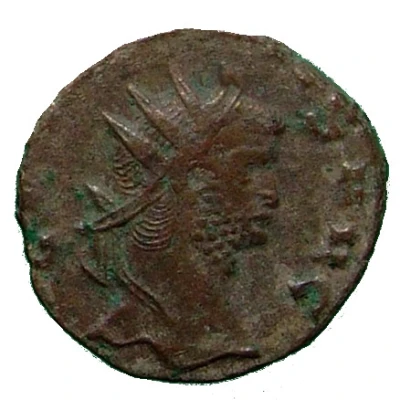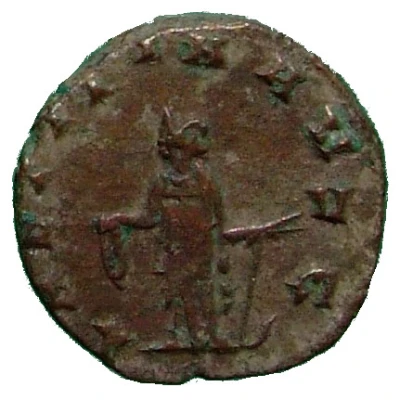


© Institute of Classics/University of Graz
Sestertius - Gallienus MONETA AVGG; Tres Monetae
258 year| Bronze | 3 g | - |
| Issuer | Rome › Roman Empire (27 BC - 395 AD) |
|---|---|
| Emperor | Gallienus (Publius Licinius Egnatius Gallienus) (253-268) Valerian (Publius Licinius Valerianus) (253-260) |
| Type | Standard circulation coin |
| Year | 258 |
| Value | Sestertius (⅛) |
| Currency | Antoninianus, Reform of Caracalla (AD 215 – 301) |
| Composition | Bronze |
| Weight | 3 g |
| Shape | Round (irregular) |
| Technique | Hammered |
| Demonetized | Yes |
| Updated | 2024-10-05 |
| Numista | N#286875 |
|---|---|
| Rarity index | 97% |
Reverse
Tres Monetae, draped, standing, each holding scales in right hand and cornucopiae in left hand; at their feet, heaps of metal.
Script: Latin
Lettering: MONETA AVGG
Translation:
Moneta Duorum Augustorum.
The mint of the two emperors (Augusti).
Comment
Example of this type:Institute of Classics/University of Graz
Source:
Online Coins of the Roman Empire (OCRE)
Interesting fact
One interesting fact about the Sestertius - Gallienus (MONETA AVGG; Tres Monetae) (258) coin is that it features an image of the Roman goddess Moneta, who was the patron deity of money and currency. This coin was minted during the reign of Emperor Gallienus, who ruled the Roman Empire from 260 to 268 AD. The image of Moneta on the coin is significant because it highlights the importance of currency and trade in the Roman Empire during that time period. Additionally, the coin's bronze composition and weight of 3 grams make it a valuable and collectible item for numismatists today.